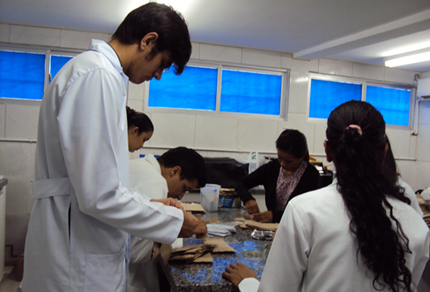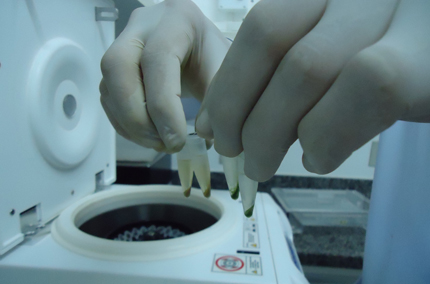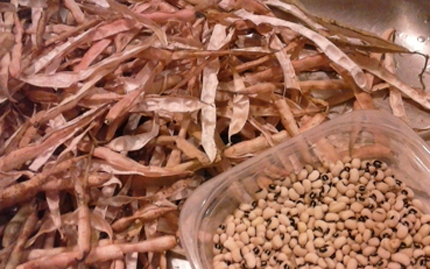Soil Science Society of America
5585 Guilford Road • Madison, WI 53711-5801 • 608-273-8080 • Fax 608-273-2021
www.soils.org
Twitter | Facebook
NEWS RELEASE
Contact: Hanna Jeske, Associate Director of Marketing and Brand Strategy, 608-268-3972, hjeske@sciencesocieties.org
Thirsty seeds reach for medicine cabinet
May 10, 2017 - Just like humans and animals sometimes need medicine to feel well or perform better, so can plants.
Scientists at the State University of Paraíba in Brazil have found that salicylic acid — also used to make aspirin — can help the cowpea be more drought tolerant. They focused on germination, the period when the plant is just sprouting, and early growth.
In Brazil, the cowpea one of the main sources of protein for many people. Americans may know the cowpea by the name black-eyed pea.
In the group’s experiments, the “medicine,” or seed treatment, was applied to the seeds before they started to grow. The process is a widely-used technique, with a goal of improving the performance of seeds as they germinate and grow. Such treatments can lend protection from conditions such as high temperature or lack of water.
“Salicylic acid acts on responses in plants when exposed to a stress condition,” explains researchers Alberto Soares de Melo and Wellison Filgueiras Dutra. “These responses are associated with increased efficiency of enzymes plants use to deal with stress. The acid has the ability to act on plant growth and development.”
The acid helps the plant be more drought tolerant because it improves the plant’s natural mechanisms for dealing with the stress. In particular, it increases the levels of three enzymes, all of which help the plant during a drought.
 But sometimes those enzymes alone are not quite enough. The salicylic acid is able to give the plant’s natural protection against drought a welcomed boost.
But sometimes those enzymes alone are not quite enough. The salicylic acid is able to give the plant’s natural protection against drought a welcomed boost.
The researchers used six different types of cowpea. They found that not all of them responded the same to the acid. It helped some overcome drought more than others. Soares de Melo says this will allow them to be more selective about which kinds of cowpea are planted.
The seed treatment was done by laying seeds on paper moistened with water and the acid. From contact with the wet paper, the water and acid enter the seeds. They also used different amounts of the acid and water to find the best combination.
“The application of this acid is a simple and inexpensive treatment for increasing water stress tolerance in cowpea, a crop of great value in north and northeast Brazil,” Soares de Melo says. “The increase of tolerance allows them to grow in areas with greater water irregularity.”
He adds that the next step in this work will be field research so they can determine exactly how much water the treatment helps save. An ultimate goal of their research is to expand the area of cultivation for the cowpea, especially to areas with limited water.
 “These results support a step forward for new research on the role and route of action of the acid,” he explains. “The acid could minimize production and productivity losses of cowpea, and other crops, when cultivated under conditions of low or irregular rainfall, such as the Brazilian Northeast.”
“These results support a step forward for new research on the role and route of action of the acid,” he explains. “The acid could minimize production and productivity losses of cowpea, and other crops, when cultivated under conditions of low or irregular rainfall, such as the Brazilian Northeast.”
Read more about this work in Agronomy Journal. This research was supported by National Council for Scientific and Technological Development (CNPq) and Coordination for the Improvement of Higher Education Personnel (CAPES).
Cowpeas are part of a food group known as pulses. The United Nations Food and Agriculture Organization declared 2016 the International Year of Pulses (IYP). In celebration, the Crop Science Society of America (CSSA) created a web page for the public about pulses, www.crops.org/iyp. Special tabs for the public include K-12 Education, Beans in the News, Grow Your Own, and Delicious Ideas. CSSA has also compiled links to various recipes, so you can increase your consumption of this healthy food.
Agronomy Journal is the flagship journal of the American Society of Agronomy. Articles convey original research in agriculture, natural resources, soil science, crop science, agroclimatology, agronomic modeling, production agriculture, and instrumentation.